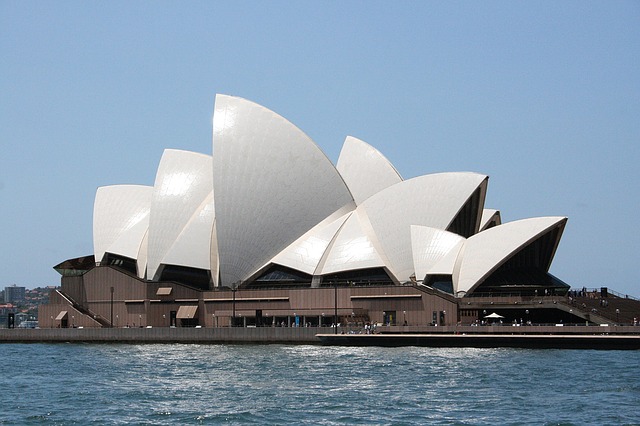Main author
Michael BrooksEngineering the World - VandA Museum
On 27 July 2016, Designing Buildings Wiki went along to the Victoria & Albert Museum in South Kensington, London, to have a look round the headline exhibition of their current Engineering Season, ‘Engineering the World: Ove Arup and the Philosophy of Total Design’.
The exhibition is dedicated to the work of the Ove Arup (1895-1988), one of the most influential engineers and designers of the 20th century.
Near the entrance to the exhibition, there is a framed coffee-stained doodle by Arup (see below) of a cartoon figure with labels such as ‘Delight’, ‘Purpose’, ‘Organisation’, and ‘Site Conditions’, that capture the essence of his pioneering ideas about what the modern engineer should encapsulate.
This became formulated as the concept of Total Design, which meant to ‘join all the professions right from the start’; redefining the way architects, designers and engineers collaborated on projects.
The exhibition includes Arup’s radical designs for improving inadequate air raid shelters during the Second World War, as well as his work on the Mulberry temporary harbours, built to facilitate the rapid offloading of soldiers and cargo, and deployed during the 1944 D-Day landings.
There are also detailed calculation sheets used for the construction of the iconic gravity-defying spiraling concrete ramps for the Penguin Pool at London Zoo; a project which established Arup as a leading consulting engineer.
As interesting as this early insight into Arup’s work is, it is overshadowed by the centrepiece of the exhibition - Arup’s most famous project, the Sydney Opera House.
The exhibition presents models and original sketches that document the journey from concept to structural design to built reality. Also of interest is the grainy 16 mm film footage of a scale model of the Opera House undergoing wind tunnel testing at Teddington’s National Physical Laboratory in 1961.
Of particular note, is the original Pegasus Mark 1 (see below), the first computer to be used for calculations on a building project. This emphasises the epoch-changing time of the mid-20th century of which Arup was a leading figure, the increasing computerisation of industries that appeared to offer a brave new world of technological innovation where anything was achievable.
In the case of the Sydney Opera House, it was the realisation of a structure that had previously been considered ‘impossible to build’.
The exhibition also examines how Arup’s Total Design concept inspired other landmarks buildings of the new high-tech form, most notably the Centre Pompidou by Richard Rogers, and the HSBC Hong Kong Building by Norman Foster (see 1:100 scale model below).
Interestingly, the entire exhibition space itself is contained within a 1:1 scale model of the Centre Pompidou’s garberette beam which made possible the building’s most distinctive design feature – external utilities and services.
Engineering students and professionals should take the opportunity to visit this unique and engaging exhibition, providing as it does a fascinating retrospective of one of the built environment’s most influential and philosophical figures.
‘Engineering the World’ runs at the Victoria & Albert Museum in London until 6 November 2016.
For more information, see V&A.
[edit] Find out more
[edit] Related articles on Designing Buildings Wiki
- 7 Engineering Wonders of the world.
- Bridge Engineering exhibition.
- Burj al Arab, Dubai.
- Centre Pompidou.
- Concept architectural design.
- Dunelm House, Durham.
- Imagine Moscow exhibition.
- RSHP.
- Shell roof.
- Structural engineer.
- Sydney Opera House.
- The history of fabric structures.
- The Japanese House: Architecture and Life after 1945.
Featured articles and news
CLC and BSR process map for HRB approvals
One of the initial outputs of their weekly BSR meetings.
Building Safety Levy technical consultation response
Details of the planned levy now due in 2026.
Great British Energy install solar on school and NHS sites
200 schools and 200 NHS sites to get solar systems, as first project of the newly formed government initiative.
600 million for 60,000 more skilled construction workers
Announced by Treasury ahead of the Spring Statement.
The restoration of the novelist’s birthplace in Eastwood.
Life Critical Fire Safety External Wall System LCFS EWS
Breaking down what is meant by this now often used term.
PAC report on the Remediation of Dangerous Cladding
Recommendations on workforce, transparency, support, insurance, funding, fraud and mismanagement.
New towns, expanded settlements and housing delivery
Modular inquiry asks if new towns and expanded settlements are an effective means of delivering housing.
Building Engineering Business Survey Q1 2025
Survey shows growth remains flat as skill shortages and volatile pricing persist.
Construction contract awards remain buoyant
Infrastructure up but residential struggles.
Home builders call for suspension of Building Safety Levy
HBF with over 100 home builders write to the Chancellor.
CIOB Apprentice of the Year 2024/2025
CIOB names James Monk a quantity surveyor from Cambridge as the winner.
Warm Homes Plan and existing energy bill support policies
Breaking down what existing policies are and what they do.
Treasury responds to sector submission on Warm Homes
Trade associations call on Government to make good on manifesto pledge for the upgrading of 5 million homes.
A tour through Robotic Installation Systems for Elevators, Innovation Labs, MetaCore and PORT tech.
A dynamic brand built for impact stitched into BSRIA’s building fabric.
BS 9991:2024 and the recently published CLC advisory note
Fire safety in the design, management and use of residential buildings. Code of practice.





























